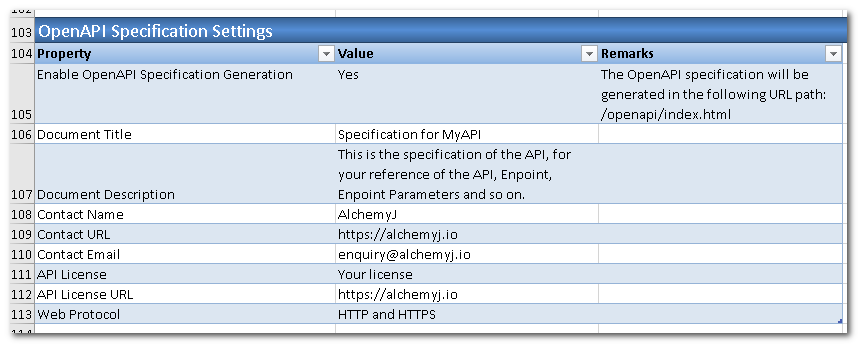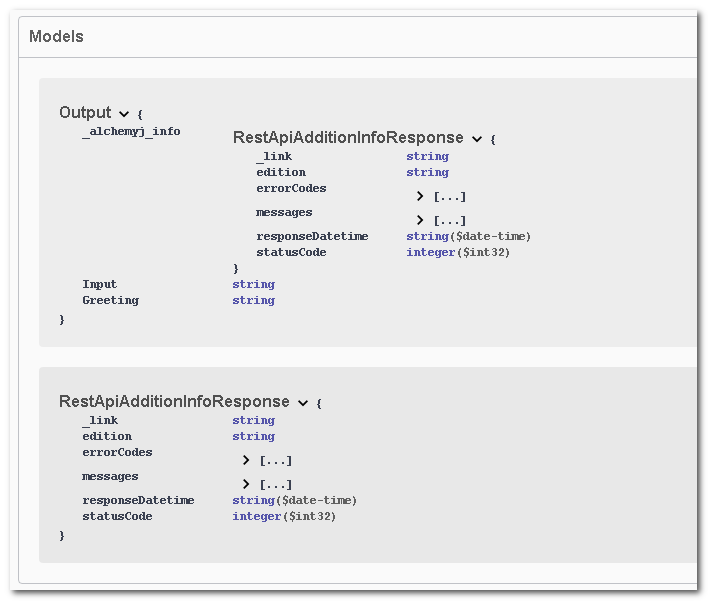OpenAPI Specification Content Source
The details of the specification comes from the configurations on the AlchemyJ workbook of the API.
- All the details of the API comes from the ##RestApi worksheet. For example:
Response code and description
- In the OpenAPI specification, all the endpoints are organized by Tags. In AlchemyJ, one ##RestApiEndpointGroup worksheet will be represented as a Tag in the specification while one Function Point will be represented as an Endpoint. The details such as path, operation, description, parameters and so on are defined in this worksheet. For example:
Note: The Function Points that Mark Deprecated is Yes, would be greyed out on the specification. The path will have a strike-through.
- The information regarding the endpoint parameters is coming from the Input Parameters section of ##RestApiEndpointGroup worksheet. For example:
- In the specification, the structure of the object is referred to as a Model. A Function Point of REST API will return an object. Its structure is defined by a Data Relationship Schema. For Input Parameters, the Data Type could also be an object. All the structures of these objects would be presented in the Models section of the specification. For example:
In this example, the structure of the output object of the Function Point is defined by a Data Relationship Schema in B6:L7 of SayHello worksheet. In the specification, the model is named by the value of the Table field in the Data Relationship Schema. If you would like to use another name, you can specify the API Model Name field. Please take note that the RestApiAddtionInfoResponse is a built-in model which will be added to the specification by the AlchemyJ automatically.













